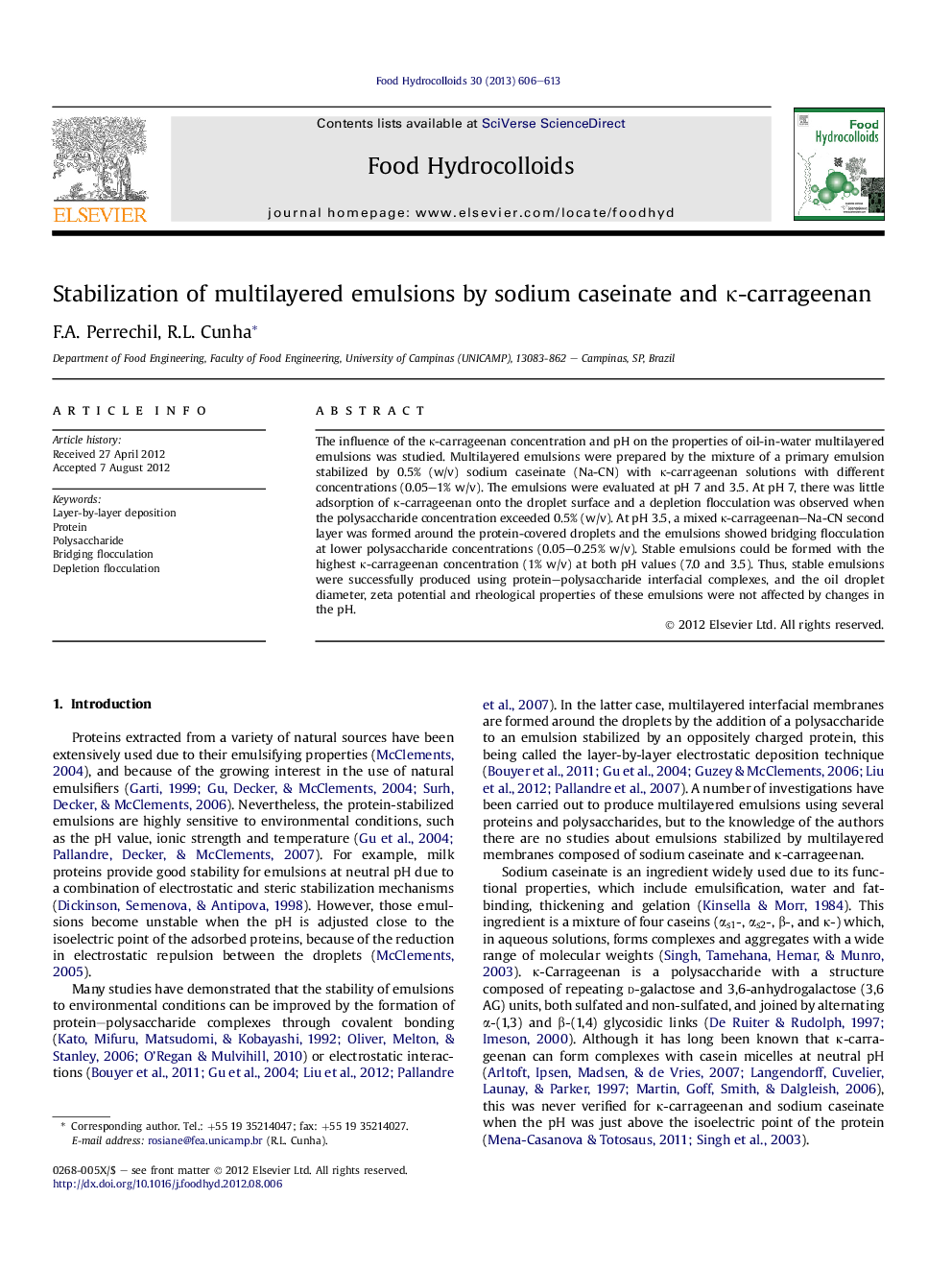| Article ID | Journal | Published Year | Pages | File Type |
|---|---|---|---|---|
| 604081 | Food Hydrocolloids | 2013 | 8 Pages |
The influence of the κ-carrageenan concentration and pH on the properties of oil-in-water multilayered emulsions was studied. Multilayered emulsions were prepared by the mixture of a primary emulsion stabilized by 0.5% (w/v) sodium caseinate (Na-CN) with κ-carrageenan solutions with different concentrations (0.05–1% w/v). The emulsions were evaluated at pH 7 and 3.5. At pH 7, there was little adsorption of κ-carrageenan onto the droplet surface and a depletion flocculation was observed when the polysaccharide concentration exceeded 0.5% (w/v). At pH 3.5, a mixed κ-carrageenan–Na-CN second layer was formed around the protein-covered droplets and the emulsions showed bridging flocculation at lower polysaccharide concentrations (0.05–0.25% w/v). Stable emulsions could be formed with the highest κ-carrageenan concentration (1% w/v) at both pH values (7.0 and 3.5). Thus, stable emulsions were successfully produced using protein–polysaccharide interfacial complexes, and the oil droplet diameter, zeta potential and rheological properties of these emulsions were not affected by changes in the pH.
Graphical abstractFigure optionsDownload full-size imageDownload as PowerPoint slideHighlights► κ-Carrageenan interacted with the initially adsorbed Na-CN at oil–water interface. ► Na-CN and κ-carrageenan formed a complex with stronger affinity at pH 3.5. ► At pH 7, the higher amount of free κ-carrageenan led to depletion flocculation. ► Na-CN–κ-carrageenan interfacial complexes stabilized the emulsions close to the pI.
